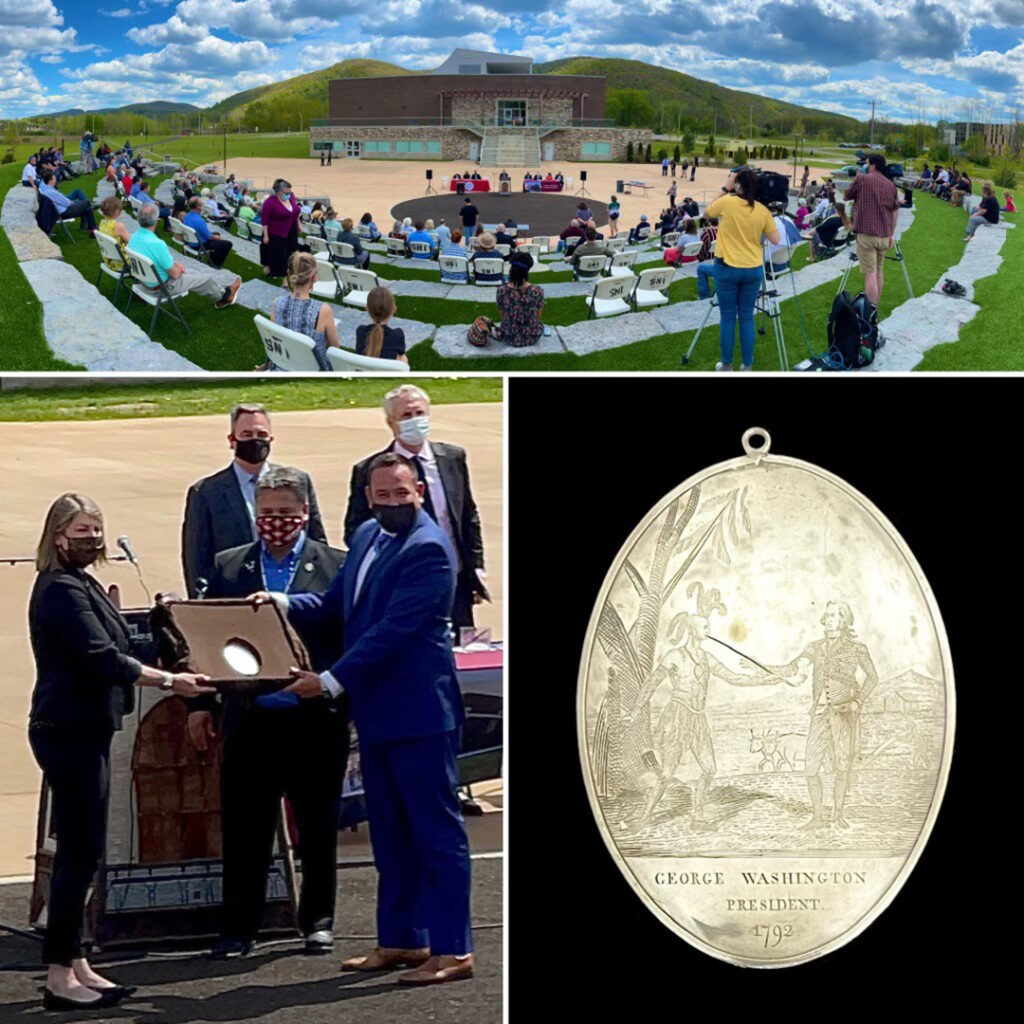Submitted by Hayden Haynes, Onöhsagwë:de’ Cultural Center, Photos by SNI Newsletter Staff
On May 17th, the Red Jacket peace medal was repatriated to the Seneca People in front of a crowd of 160 at the Onöhsagwë:de’ Cultural Center on the Allegany Territory. The medal was previously in the care of the Buffalo History Museum.
Under NAGPRA (Native Graves Protection and Repatriation Act) § 3005(a)(5), the Nation requested the return of the Red Jacket Peace Medal as an object of cultural patrimony that has significant historical and ongoing cultural and traditional importance not only to our community but to all Seneca peoples.
The medal was gifted to Seneca Chief Red Jacket by President George Washington in 1792 to commemorate discussions that culminated in the Treaty of Canandaigua of 1794, in which the Seneca Nation served a crucial role. It was given as a symbol of peace, friendship and enduring relationships among the United States and the Six Nations. The Peace Medal stayed with Red Jacket for the remainder of his life and he reportedly wore it every day. Upon Red Jacket’s death in 1833, the medal was passed down to his nephew, Jimmy Johnson. Johnson wanted to sell the artifact to what was then the New York Museum in 1851, but the sale was intercepted by another descendant, Col. Ely Parker.
Parker also reportedly wore the medal frequently. He was well connected, though unable to fulfill his desire to practice law due to his Native heritage. As a result of his relationships, the medal came into contact with a number of high-profile individuals – including President Abraham Lincoln, who was said to have held the medal the day before his assassination in April 1865. Parker kept the medal until his death in 1895. It was subsequently sold to the Buffalo Historical Society (now the Buffalo History Museum) that same year. The Museum has served as a steward of the medal for the past 125 years and sustained popular interest in it, as well as in Red Jacket and all Seneca communities. Despite this laudable stewardship, the reality is that no individual can own an object of cultural patrimony. Though the Nation understands Ms. Parker’s need for financial stability, it also believes she was not authorized to sell the heirloom.
NAGPRA § 3001(3)(D) defines cultural patrimony as objects with ongoing cultural importance to a tribal nation, rather than property owned by an individual. The Red Jacket Peace Medal fits this description. As such, and pursuant to NAGPRA, the Red Jacket Peace Medal cannot belong to any individual or museum; it is inalienable and belongs to the Seneca People as a collective.
Like the Canandaigua Treaty, the Red Jacket Peace Medal is a representation of the ongoing sovereign relationship between the federal government and the Seneca Nation. Even though the Red Jacket Peace Medal has been out of our hands for many years, it has always maintained an inviolable place in our cultural memory. We will continue our efforts to repatriate other important objects of cultural patrimony that rightfully belong with the Seneca People.
The Peace Medal is now being held at the Onöhsagwë:de’ Cultural Center in Salamanca and is currently on display for public viewing.
Museum/Cultural Center hours are:
Monday-Friday
from 10am-4pm.





